New Redis™ Deployment: Dedicated Hosting
Redis™* Deployment - Dedicated Hosting Setup
Estimated time to complete: 5 minutes
- Start your trial on the ScaleGrid Console.
- Select “Redis™” and your cloud provider of choice on the Getting Started page, click Configure Your Cluster in the bottom left-hand corner, and select New Redis™ Cluster:
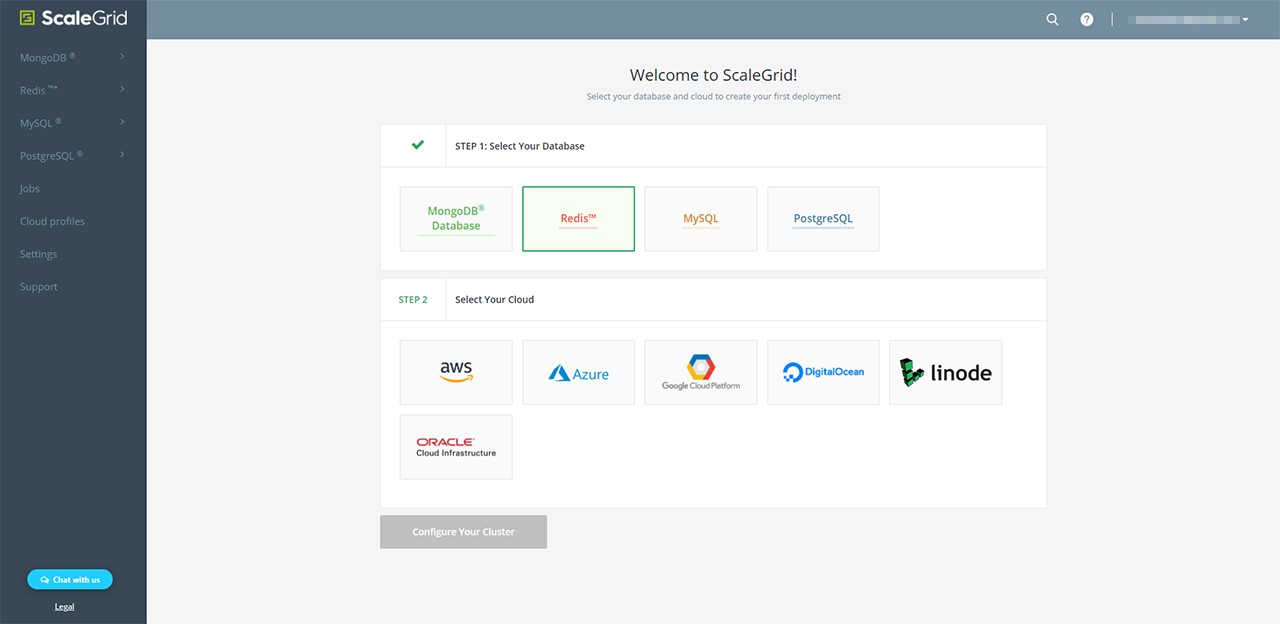
Step 1. New Deployment
- Create Dedicated Redis™ Deployment: In the pop-up menu, set a name for your deployment using alphanumeric characters.
- Choose your Cloud Profile from the different data centers to host your dedicated Redis™ deployment through ScaleGrid.
- Select your virtual machine (VM) size for your Redis™ deployment you wish to create, ranging from Micro to X4XLarge.
- Then, select the Redis™ version that you wish to use.
- Finally, check the 'Enable Cluster Mode' button to create a Redis™ Cluster mode deployment which automatically shards your data across multiple Redis™ nodes to increase your availability.
- After you've entered and reviewed all the information on the 1. New Cluster step, click the green Next button.
Create a new Redis™ deployment
Step 2. Replication (optional):
In case you have not selected to enable Cluster mode, you will be presented with the Replication options next, in step 2.
In Replication, you have the option to enable these for your Redis™ deployment. Select the Yes checkbox, and then choose the number of Redis™ Slaves for your deployment. From there, you will be prompted to select data center you'd like to use for your Redis™ Master, Slave and Sentinel:
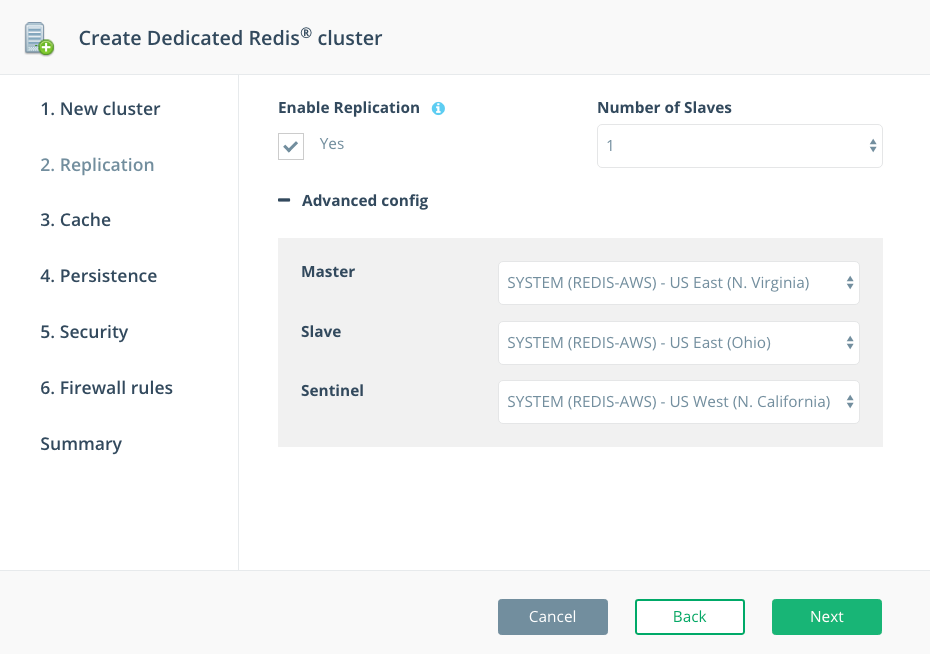
Replication options
Step 2. Shards (optional)
In case you have selected to enable Cluster mode, you will be presented with the Shards options next, in step 2.
You can choose the total number of shards (i.e. masters) your cluster should have, along with the number of replicas each master must have. You can also configure the data center location for each node of the cluster.
Redis cluster mode sharding options
Step 3. Cache (optional):
In step 3. Cache, you have the option to use "Redis™ as Cache". Simply select the Yes checkbox and select your Data Eviction Policy from the dropdown menu:
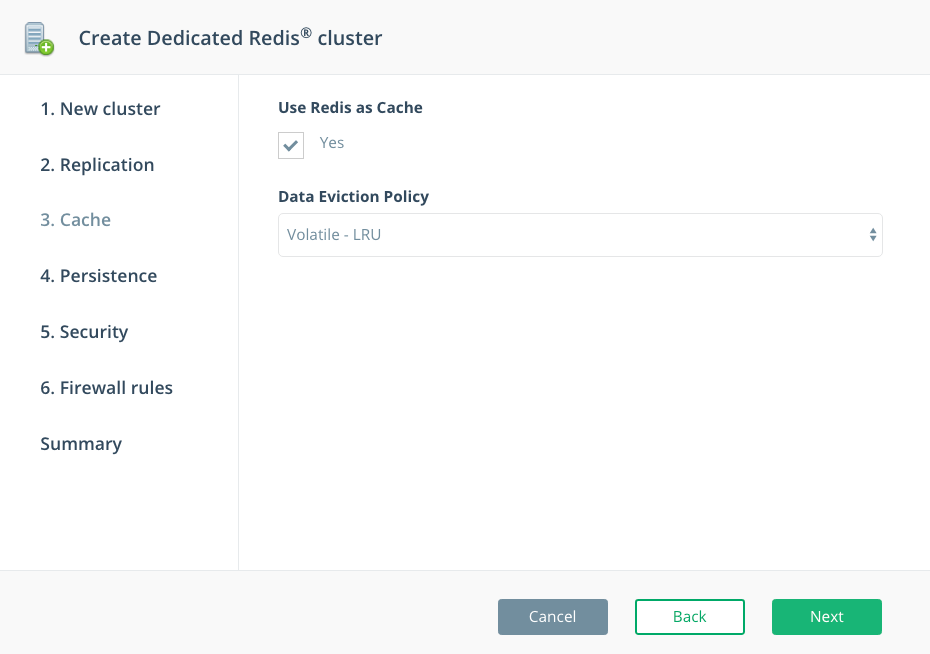
Step 4. Persistence
Customize the persistence of your Redis™ deployment. You can enable periodic snapshots to the disk (RDB) based on time thresholds and key changes. You can also enable Append-Only File (AOF) to increase your data durability so the node writes all of the commands that change cache data to this file.
Lastly, set up a Backup Schedule for your Redis™ deployment to take a snapshot every 1-24 hours so your data is always accessible.
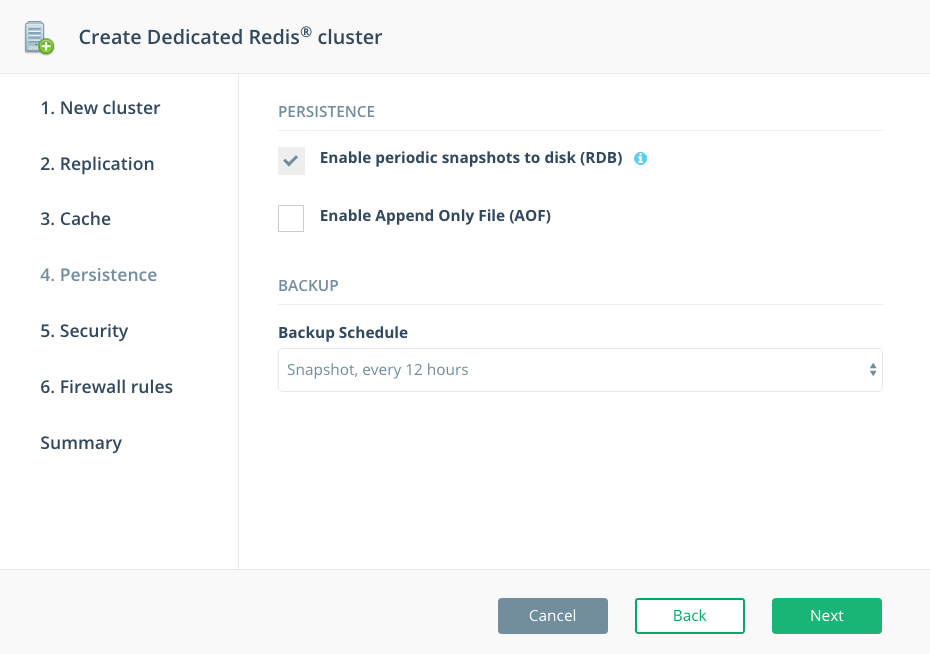
Step 5. Security
In this step, you can enable the encryption of your data disk so your data volumes are encrypted with LUKS (Linux Unified Key Setup). You will also see a checkbox for Enable SSL, which is unavailable for selection currently.
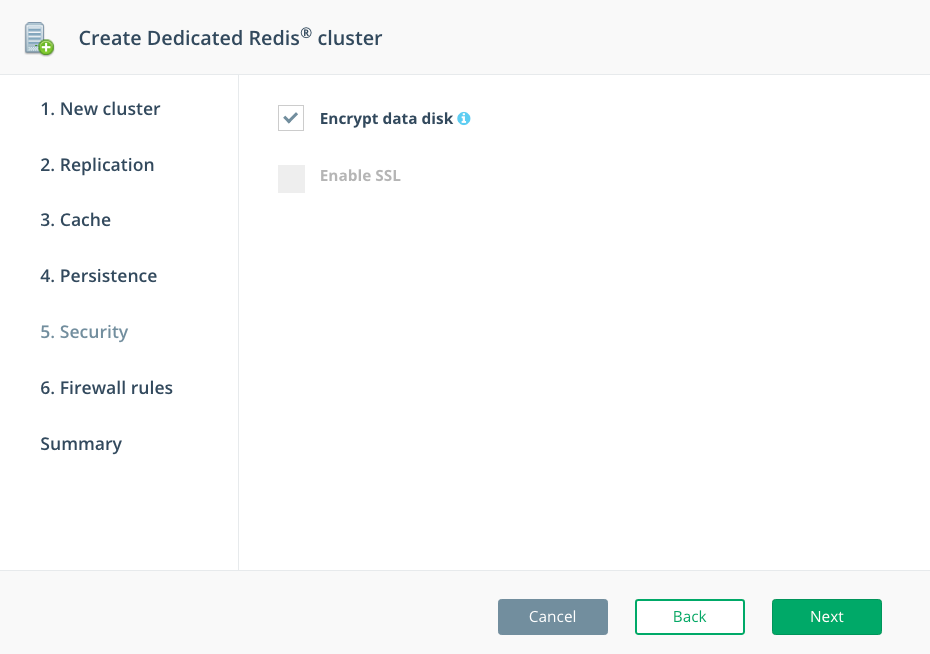
Step 6. Firewall Rules
To protect your deployment from exposure on the Internet, we've created a simple way for you to configure a firewall for access to your Redis™ servers. Simply enter the IP CIDR that should be allowed access, and add them through the blue Add button to the right.
You can grab your current IP address from the bar at the top of the box.
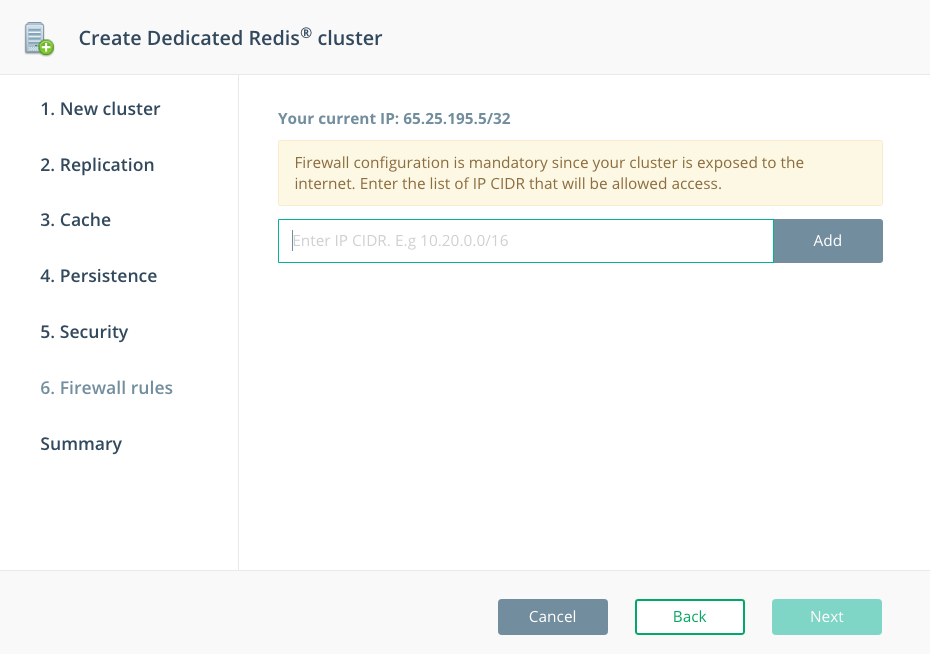
Step 7. Summary
Review the details of your new Redis™ deployment, and click the green Create button to finalize your setup.
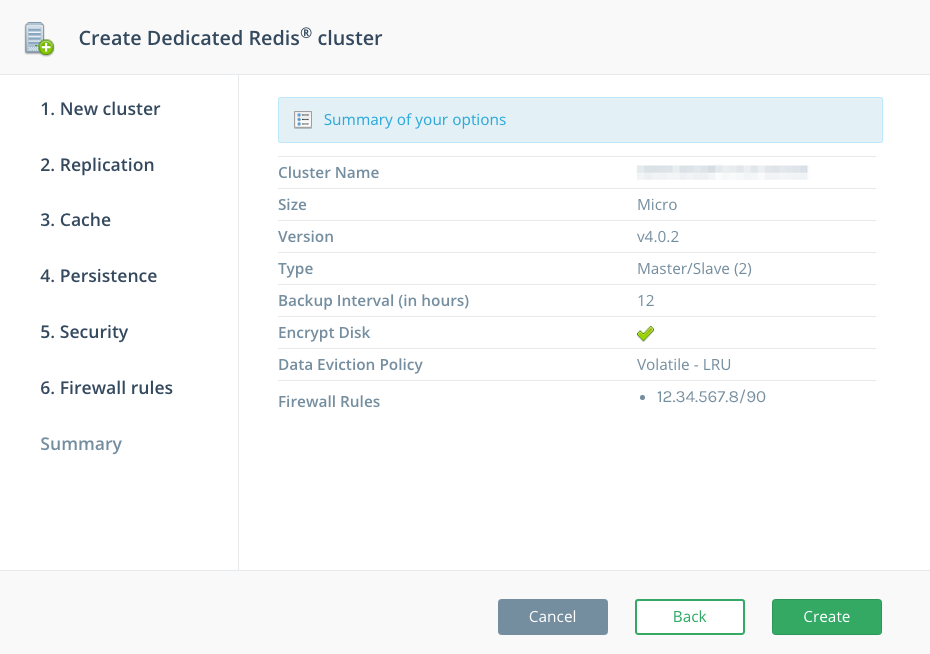
Step 8. Grab Your Credentials
Your deployment is now being created! This process takes 15-20 minutes, so while you wait, go to your new Redis™ deployment page, and click on the Show link next to Credentials to connect to your Redis™ account.
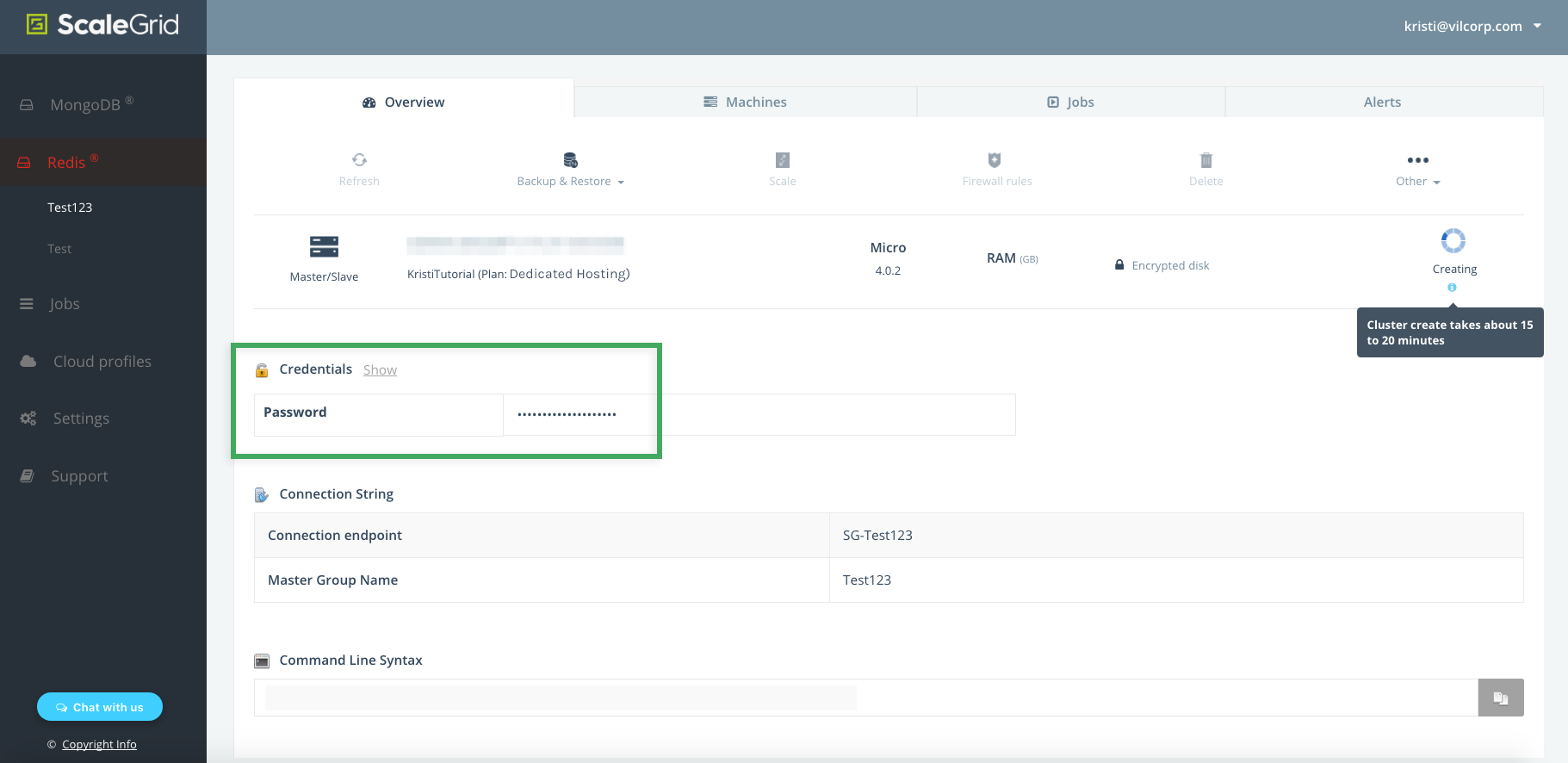
* Redis is a trademark of Redis Labs Ltd. Any rights therein are reserved to Redis Labs Ltd. Any use by ScaleGrid is for referential purposes only and does not indicate any sponsorship, endorsement or affiliation between Redis and ScaleGrid.
Updated 7 months ago
